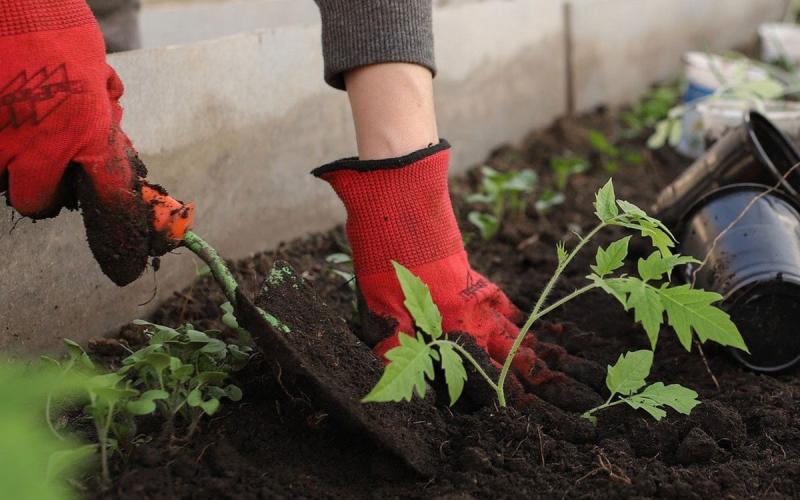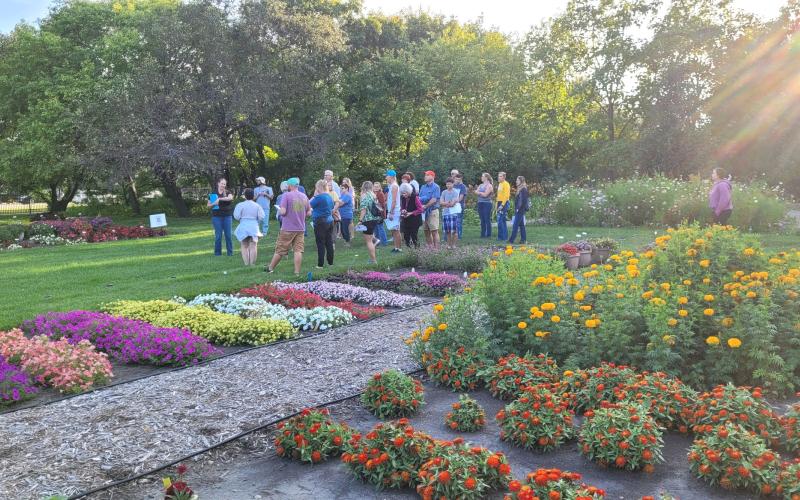Original article by David Graper, former SDSU Extension Horticulture Specialist and Master Gardener Program Coordinator. Updated by Katrina Manley, SDSU Extension Horticulture Assistant; and Kristine Lang, Assistant Professor, Agronomy, Horticulture, and Plant Science. Special thanks to SDSU Extension Master Gardener Trainee, Max Peterson, for editorial review of this article.
Some plants are often difficult to find at your local garden center or discount outlet store. Even specialty catalogs and websites in most cases won’t provide a large, potted plant ready to take off in the garden, but rather a bare-root plant. Although possibly smaller, bare-root plants can be an economical way to get desired plants.
What Are Bare-Root Plants?
A bare-root plant is just what it sounds like, three-quarters of a plant with bare roots and not growing in a container. Usually, it will come with the roots wrapped in moist materials, like shredded paper or peat moss, then wrapped in plastic. It’s often cheaper to buy bare-root plants, especially compared to shipping a larger, heavier potted-plant. Bare-root plants are also less likely to be damaged during shipping, because they usually lack leaves and instead have roots and some stems. Bare-root plants, however, need some extra care, especially if they are not shipped at planting time.
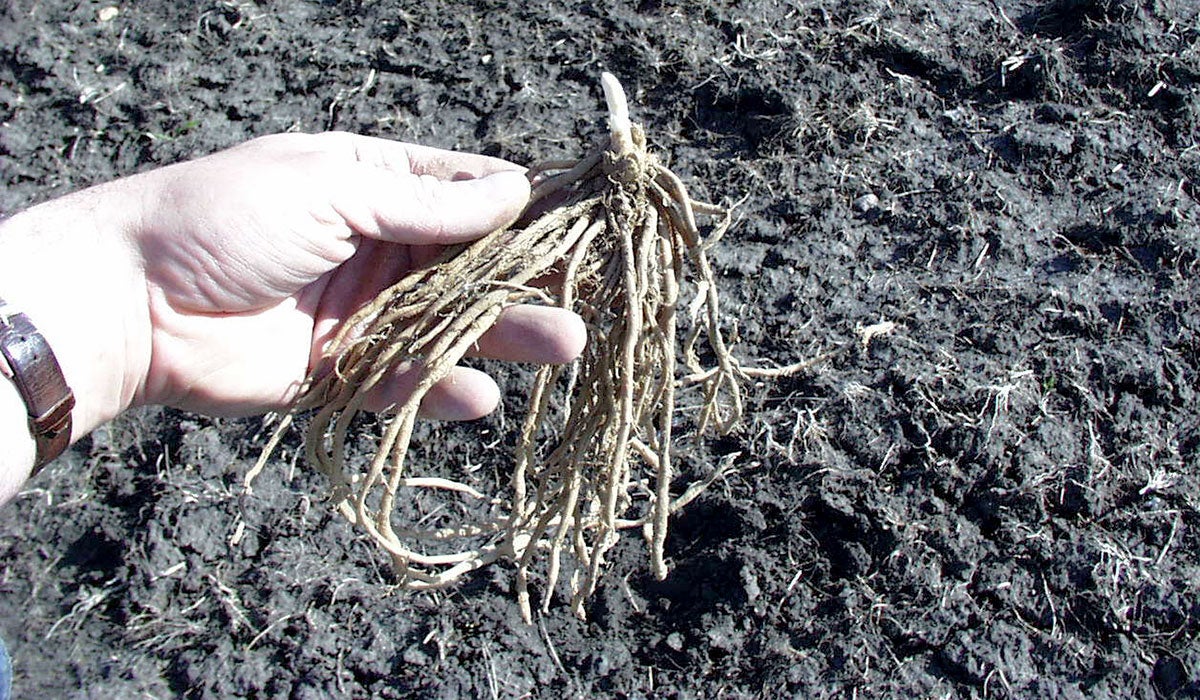
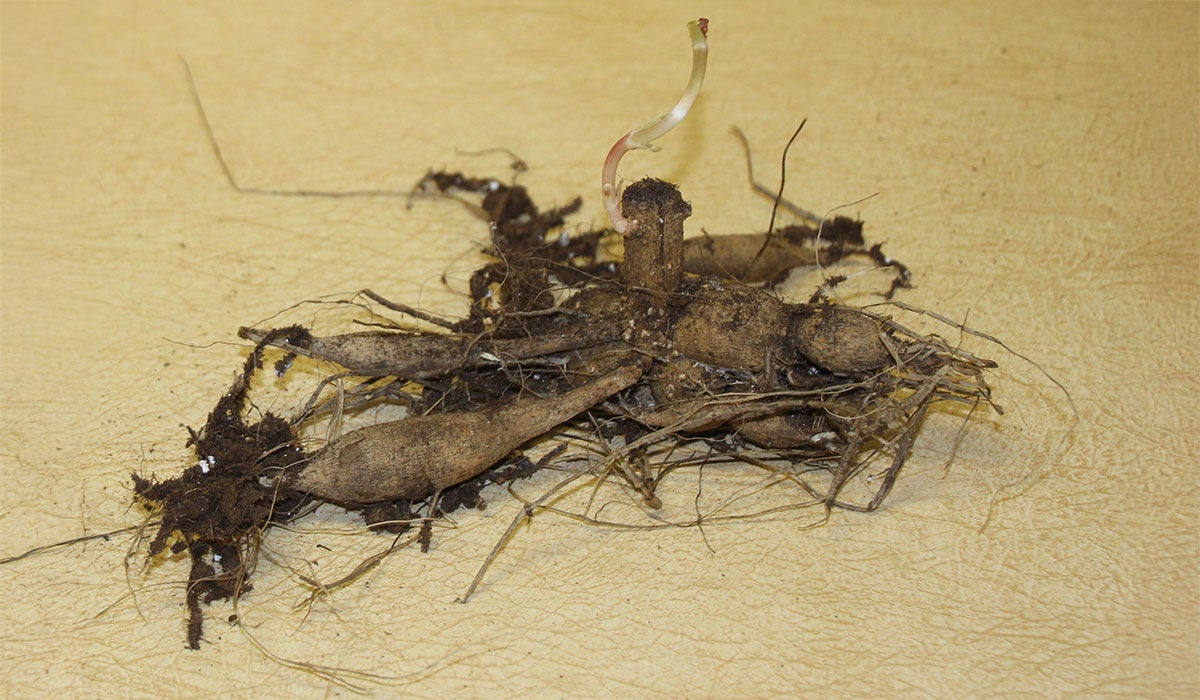
Purchasing and Storing Bare-Root Plants
Many herbaceous perennial plants are sold as bare-root plants. Gardeners will usually have a much greater variety of plants to choose from available from a wider variety of retailers, compared to their local garden-center (check before you buy). For new and unusual plants, however, cultivars are more likely to be available via mail order or a website.
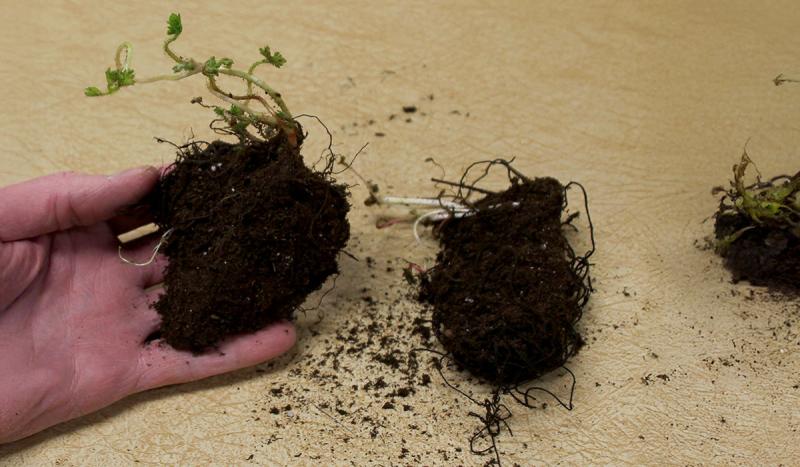
Usually, when ordering bare-root plants, the merchant asks about the garden’s USDA Hardiness Zone (4a, 4b, 5a, and some small sections of 5b, in South Dakota). If the plants arrive a little too early, keep the plants in a cool location (around 40 degrees Fahrenheit), if possible. The typical place to store bare root plants is a root cellar. Some nurseries have root cellars, where they likely store their bare-root plants before selling them or potting them for later sale.
When your plants arrive, check them. The packing material around the roots should still be moist but should not be dripping wet. If it seems dry and planting isn’t planned for a few days, sprinkle a little water on them. Re-pack, and store in a cool place, until planting time. For bare-root trees, the packing material on the roots is the most-important part, but, nevertheless, keep the tops of the trees cool and avoid exposure to drying conditions.
Planting Perennials
One of the challenges gardeners have when bare-root plants arrive is determining which end of the plant to orient upward when planting. Often, the plant looks like a mass of roots, with a few buds connected to the central part or crown of the plant. Generally, the buds should be oriented upward and positioned about an inch or two below the soil surface.
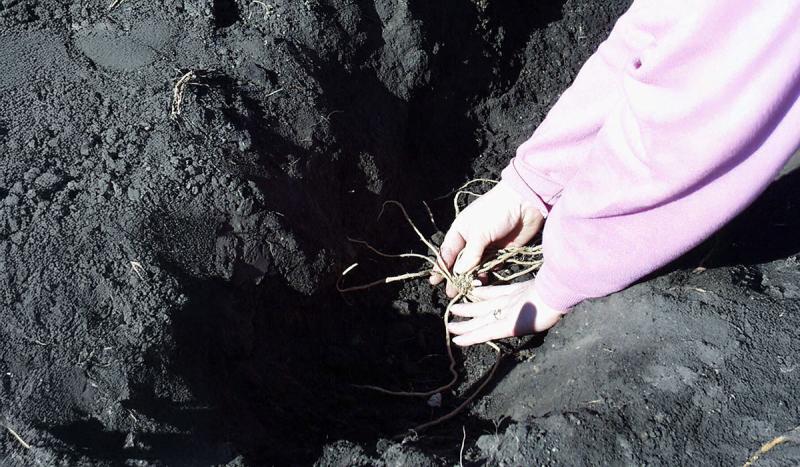
Check whether any planting instructions are included to help determine the proper planting depth. Some plants, like peonies, will not flower well if planted too deeply. Prepare a planting hole wide enough to easily accommodate the roots. Spread the roots well and cover them with soil. Put in a marker or stake with the plant’s name inscribed to facilitate locating the bare-root plant. It might be a few weeks before bare-root plants emerge, and the marker or stake will help prevent digging into the plants mistakenly.
Bare-root trees are fairly easy to plant. First, examine the root system to determine its size. Use sharp pruning-shears to remove any badly damaged or broken roots. Keep the roots covered and moist while digging a hole. It doesn’t take long for the fine feeder roots to dry and die on a warm, sunny spring day. Dig a hole wide enough in diameter to easily accommodate the roots without having to “cram” them in. The hole should be just deep enough so that when the roots are spread out in the hole, the top-most root is just below the soil surface once the hole is refilled.
Position the tree in the hole. It is usually helpful to have someone help to hold the tree while the hole is refilled. Use the soil from digging the hole to refill it. Adding lots of amendments, like compost or peat moss, are often not very beneficial in the long term. It is better to get the tree reestablished in its own existing soil. Firm the soil, then water thoroughly.
